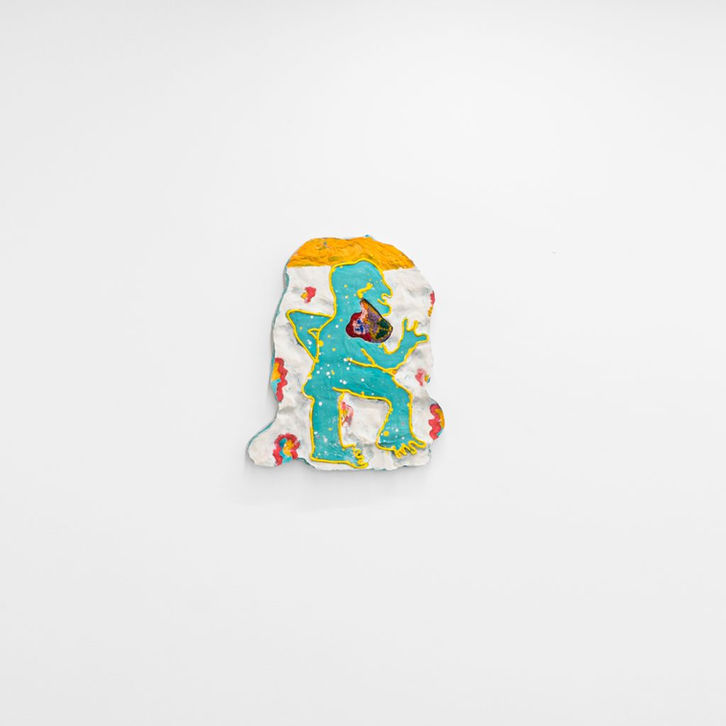What's for dinner?
Solo exhibition at Balcony Gallery (March-May 2022)
Photo credits: João Neves
Our brains are often labelled as one of the most important tools that distinguish us from other animals. We are instructed that knowing how to maintain and wield this powerful organ will guarantee us success. However, animals across the genera are similarly endowed, through complex evolutionary processes, with chemicals and hormones that dictate their behaviour and survival.
European starlings (Sturnus vulgaris) have been shown to be inherently optimistic. In one study, they were taught to associate a short auditory tone with an immediate food reward and a longer tone with a delayed food reward. When presented with a medium length auditory tone, the majority of birds displayed behaviour indicative of an immediate reward. Faced with an indeterminate stimulus, their increased dopamine levels propelled them optimistically towards the better option. Dopamine is produced when there is an expectation for reward: the monkey sighting a fruit in the tree, a Whatsapp notification, or the starlings’s optimistic response to an indeterminate stimulus.
Orca (Orcinus orca) brains have a more elaborated and complex insular cortex compared to other animals. This part of the brain processes affective empathy and nurtures other social emotions such as bonding, love, trust or generosity through its release of oxytocin and connecting of emotional and abstract feeling, memory, learning and autobiography. For this reason, it’s believed that orcas process these feelings in ways beyond primate understanding. One example that we might understand, and that shows their sociality is their sharing of food to such a degree that they prefer the pod to collectively starve rather than sacrifice one individual for the collective good.
Serotonin is a neurotransmitter that regulates mood and is mostly found in the enteric nervous system within the gastrointestinal tract. Counterintuitively, honey bees (Apis mellifera) that are more likely to sting have higher levels of serotonin. These high levels are also transported to the honey they produce and maybe ingesting some can help us compensate for the dopamine crush after a meal we yearned for.
When brown bears (Ursus arctos) hibernate, their bodies produce endorphins to curb cell metabolism and reduce their need for oxygen. This in turn allows them to reduce the blood supply to their internal organs and brain without damaging them, so they can conserve precious fat reserves for hibernation. Endorphins are released to create a numbing effect to pain in extreme cases of survival. That euphoric feeling after the gym likewise numbs the pain after physical exercise, albeit without the impulse to hibernate.
This exhibition examines these chemicals through a lens that is not exclusively anthropocentric and, by taking inspiration from scientific diagrams and graphics, it attempts to give a mythopoetic shape to their microscopic mechanics and reposition popular conceptions of them.
Within post-industrial neoliberalism, the pressure to achieve ‘wellness’ by managing the mind-body duality through exercise, mindfulness, and other monetarised activities, has become inescapable. Its narcissistic approach places the onus of global problems upon our shoulders: while we cannot singularly confront the cancellation of our future due to climate change, socio-economic inequality, and alike, we are taught to micromanage our reactions to them.
It's not uncommon that after a celebratory lunch someone sitting on the table, even though they have just eaten, will ask: “what are we having for dinner?”.
.... let’s rephrase this.
It’s not uncommon that after a celebratory oxytocin release, pre-dated by a dopamine rush, followed by a dip in the mood due a serotonin lack and an endorphin release that induces a need to hibernate, a cycle is completed when dopamine is released again. With our desire for an optimistic future to aggregate our micromanaged reactions, someone will ask: “what’s for dinner?”. The urgent political need to realign these buzzword chemicals towards a commitment to the flourishing and feeding of the expansive network of genera, becomes a hormonal dictate for our collective survival.
'Orcas map the score" a text by George Reiner in response to this exhibition can be downloaded here.











